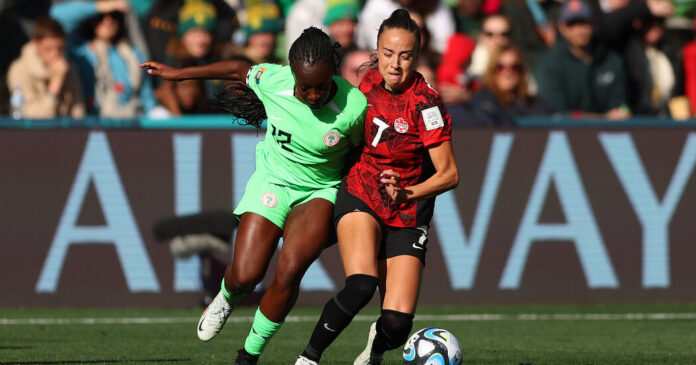
After Australia and New Zealand, the co-hosts of the Women’s World Cup, kicked off the tournament with victories, the focus now shifts to the next games of group play, and to three top contenders taking the field: Canada, Spain and the United States.
Spain and the United States are no strangers to the final rounds of the Women’s World Cup, and they will have to withstand the pressure of having a target on their backs. Canada faces a different sort of pressure: its so-far-unrealized expectations on the World Cup stage. It played Nigeria to a draw, 0-0, on Friday.
After these games, there will be a clearer indication of which of these contenders are poised to make a championship run, and which have problems to address.
Philippines vs. Switzerland
The Philippines, in its first Women’s World Cup, features a roster with 18 American-born players. It will face Switzerland, a team with only one previous Women’s World Cup appearance, in 2015. The two countries have never played each other; neither is expected to advance far in this tournament.
Spain vs. Costa Rica
Spain, whose roster contains several players from the powerhouse European club Barcelona, has lost only once in the last year. Spain is yet another program in a battle with its federation: A truce was called before the team set off for the tournament, but tensions remain.
When Spain and Costa Rica played in the opening match of the 2015 Women’s World Cup, the Costa Ricans were able to hold the Spaniards to a 1-1 draw, a performance they’ll be looking to repeat.
United States vs. Vietnam
Vietnam, playing in it’s first Women’s World Cup match, has odds of winning the tournament at just 50,000 to one, but the team gave the highly rated German team a scare on June 24 by keeping a friendly close — the final score was 2-1.
The United States was criticized after its opening performance in 2019, when the team beat Thailand by 13-0. In the lead-up to this Women’s World Cup, none of this year’s players would commit to refraining from a similar goal frenzy, and as a team looking to make history with a third straight title, the United State would take a win in any form.
Nigeria vs. Canada
Both teams momentarily set aside battles with their federations over investment and equal pay to play in their opening game, which ended in a scoreless draw.
Canada, the reigning Olympic champions, made the quarterfinals of the World Cup in 2015 but lost in the round of 16 in 2019. Nigeria has won the Africa Cup of Nations 11 times but is facing a stiff challenge in a group that includes the host nation Australia.
One of the toughest parts of watching the Women’s World Cup this year may be keeping track of all the time zones in Australia and New Zealand where the matches are being played.
That will require lots of math and, in some cases, middle-of-the-night alarms. So let us help!
Our friends at The Upshot have created a handy tool that allows you to see the World Cup schedule easily, accurately and in the time zone of your device’s location.

The third time around, Megan Rapinoe’s reaction to a potentially career-ending knee injury went no further than an eye roll. She had torn her anterior cruciate ligament. She could reel off the recovery schedule from the top of her head. She could see, crystal clear, the next nine to 12 months spooling out in front of her.
The surgery, the painstaking rehab, the grueling weeks in the gym, the anxious first steps on the turf, the slow journey back to what she had once been. As she considered it in 2015, she felt something closer to exasperation than to despair. “I was like, ‘I don’t have time for this,’” she said.
The first time had been different. She had torn the anterior cruciate ligament in her left knee at age 21, when she was a breakout star in her sophomore year at the University of Portland. At that time, she felt what she called “the fear” — the worry that it might all be over before it had begun.
Over the last year or so, that fear — and the searching questions it prompts — has coursed through women’s soccer. The sport has at times seemed to be in the grip of an epidemic of A.C.L. injuries, one so widespread that at one point it had sidelined a quarter of the nominees for last year’s Ballon d’Or.
Vivianne Miedema of the Netherlands, whose knee injury will keep her out of the World Cup, pointed out that, this season alone, almost 60 players in Europe’s five major leagues had torn their A.C.L.s. “It is ridiculous,” she said earlier this year. “Something needs to be done.”
Working out precisely what that might be, though, is more complicated than anyone would like.



